Do you want to improve your website traffic and boost conversions? Understanding transactional search intent can help.
In simple terms, transactional search intent refers to the type of searches where users are looking for something specific to buy or complete a transaction.
It’s essential to optimize your website for this type of intent, as it can significantly impact your business website’s content marketing success.
Optimizing your website for transactional search intent is essential to attract more potential customers ready to make a purchase or take action on your site. It will ensure that your website is easy to use and navigate for those ready to buy.
So let’s dive in and learn how to leverage this knowledge to increase your website traffic and conversions!
- Introduction to Transactional Search Intent
- Transactional Search Intent: Characteristics and Examples
- Identifying Transactional Search Intent Topics:
- Analyzing Top Ranking Pages and SERP Results for Transactional Intent
- Check ‘SERP Reliability’: Consult the SERPs for Transactional Search Intent
- Optimizing for Transactional Search Intent: Examples and Identification
- Additional FAQs on Transactional Search Intent
- Conclusion: The Importance of Transactional Search Intent
Introduction to Transactional Search Intent
Understanding the different types of search intent is crucial for searchers who look for information on Google.
There are three types of search intent: informational, navigational, and transactional. It is essential to use the right keyword to match the search intent.
Transactional search intent is when Google searchers intend to make a purchase or engage in some commercial activity through the search engine.
This type of search term often includes specific keywords that indicate consumers’ intention to buy or take action.
Explanation of the Other Types of Search Intent
Before diving into transactional search intent, let’s briefly touch on the other two types: informational and navigational.
Informational search intent is when a user is looking for information on a particular topic.
The queries often start with “how,” “what,” “when,” and “why.”
Users perform informational queries when they seek information about a particular topic but do not intend to buy anything at that moment. They may want to learn more about something before making a purchase.
For example, “how to bake a cake” or “what is the capital of France.” are all information search queries.
Navigational search intent is when a user wants to navigate to a specific website or page. These queries typically include brand names or URLs.
Users perform navigational queries when they want to visit a specific website or page. They already know what they want and are looking for the fastest way to get there.
For example, “Facebook login page” or “YouTube.com.”
Purpose and Characteristics of Transactional Search Intent
The purpose of transactional search intent is clear — users are looking to make a purchase or engage in some commercial activity.
Users perform transactional queries when they intend to complete a task or make a purchase. They have already made up their minds and are ready to take action.
These queries often include words like “buy,” “order,” and “purchase.”
Characteristics of transactional searches include:
- Specific product names
- Brand names
- Price comparisons
- Product reviews
- Local business searches
Examples of Queries That Indicate Transactional Search Intent
Here are some examples of queries that indicate transactional search intent for searchers who use Google to look for specific keywords:
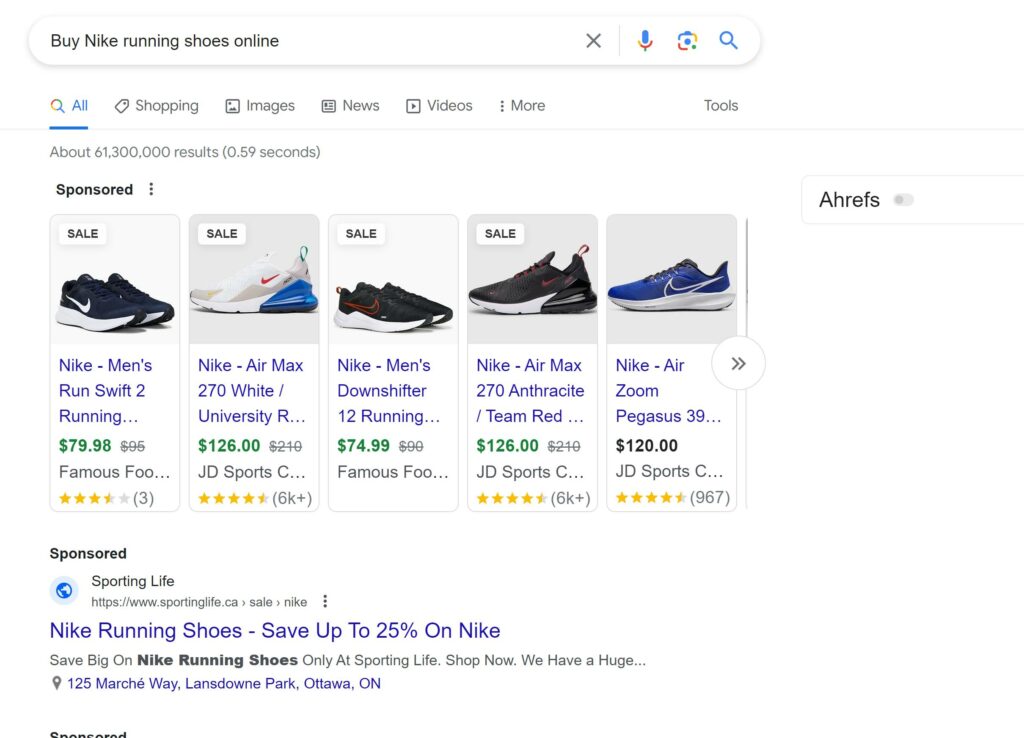
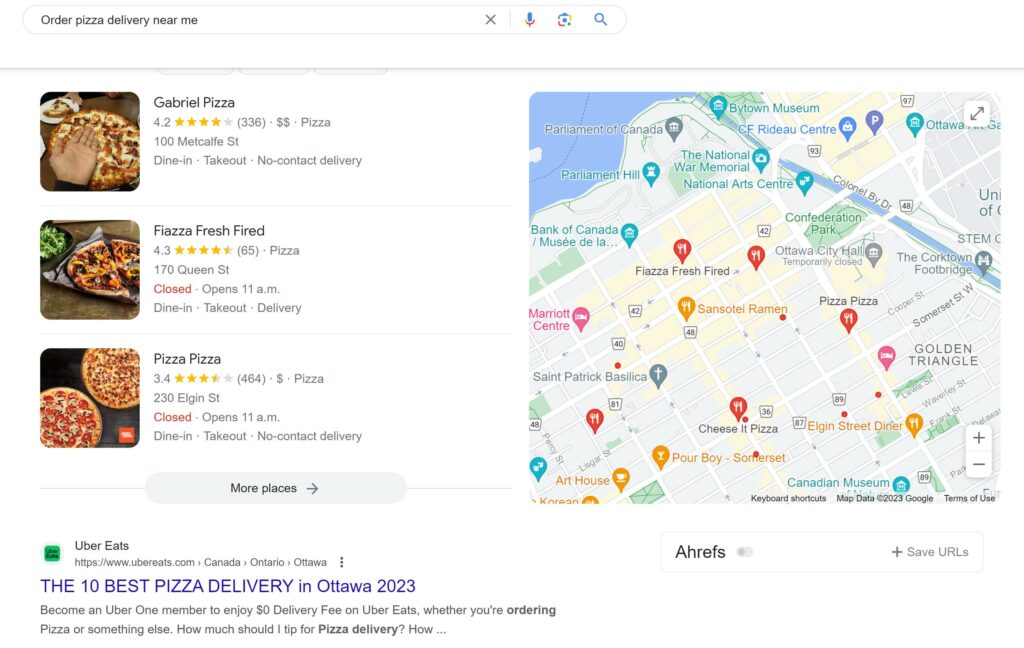
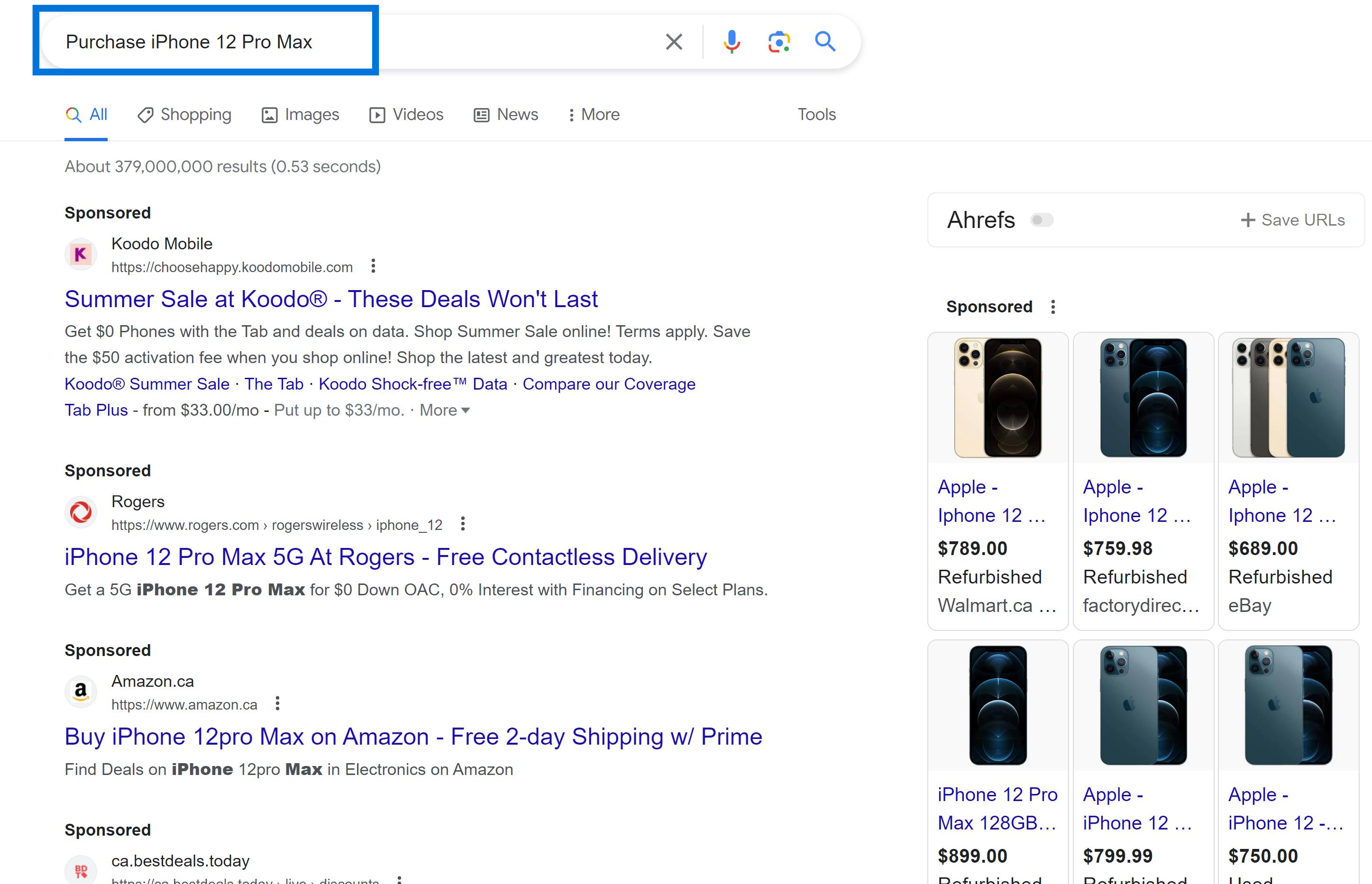
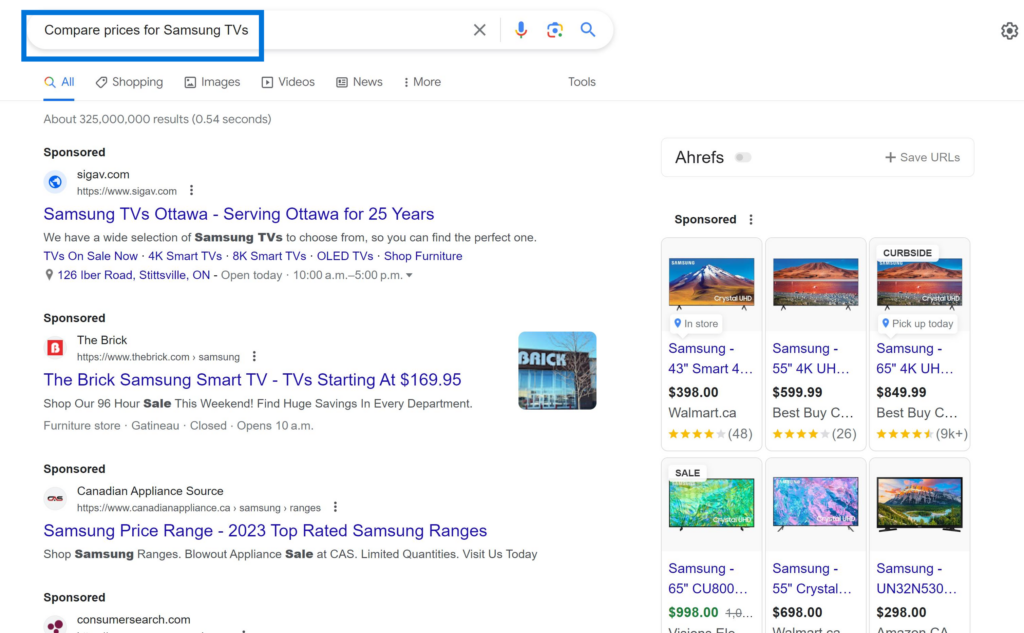
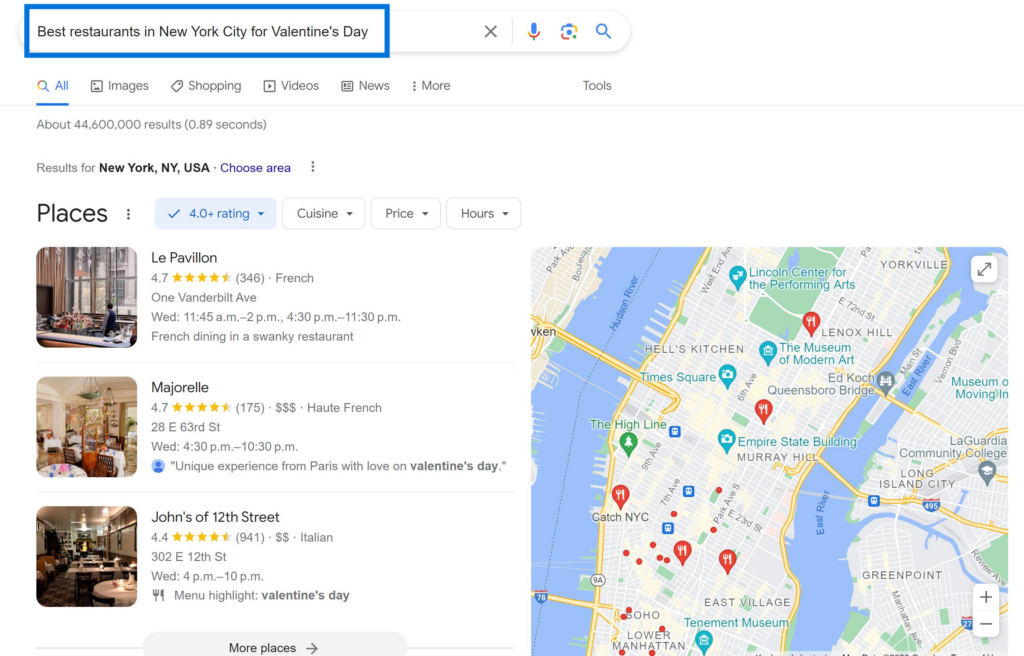
Statistics on the Prevalence of Transactional Searches
According to a study by Penn State’s College of Information Sciences and Technology, around 10% of all search queries are transactional.
If you’re operating an online business and selling products or services, it’s essential to make sure your website is tailored to meet transactional search intent.
Transactional Search Intent: Characteristics and Examples
Characteristics of Transactional Search Intent
When a user types a query into a search engine, their intent can be categorized as either informational, navigational, or transactional.
A transactional search intent is characterized by the user’s desire to complete a specific task or make a purchase.
The following features define a query as having transactional search intent: keyword usage, what searchers look for, and image source.
- Keywords with modifiers: Users include words such as “buy,” “order,” or “deal” in their search queries. For example, “buy Microsoft surface pro“
- Brand-specific searches: Users look for specific brands or products they want to purchase. For example, “HubSpot CRM pricing“
- Location-based searches: Users may include location information in their queries when looking for nearby stores that sell what they need. For example, “best pizza restaurants in New Orleans“.
- Comparison searches: Users compare prices, deals, and reviews before making a purchase. For example, “iPhone 12 vs iPhone 13“
Types of Transactions Users May Be Searching For
Users engage in various types of transactions when searching online, catering to the needs of both people and search engines with relevant keywords.
Here are some examples:
- E-commerce transactions: These transactions involve users purchasing goods from an online store. E-commerce websites such as Amazon, eBay, and Walmart cater to this type of transaction.
- Service-based transactions: These transactions involve users booking services online. Examples include booking flights on airline websites or reserving hotel rooms on travel sites.
- Subscription-based transactions: These transactions involve users subscribing to services such as streaming platforms like Netflix or music services like Spotify.
- Financial-based transactions: These transactions involve users performing financial activities such as transferring funds between accounts or paying bills online.
Identifying Transactional Search Intent Topics:
Conducting Keyword Research
Keyword research is essential in creating content that meets user needs and business goals.
You can identify relevant target keywords that align with your content strategy by conducting thorough keyword research.
When researching transactional keywords, consider the following:
- Use commercial keywords that reflect the user’s intention to make a purchase or book a service.
- Identify long-tail keywords that have low competition but high conversion rates.
- Analyze competitor websites and their use of transactional keywords.
Tools for Identifying Transactional Search Intent Topics
Several tools are available to assist in identifying topics with high potential for targeting users with transactional search intent.
Here are some examples:
- Google Ads Keyword Planner: This tool allows you to research keywords related to your product or service and provides data on their search volume and competition level.
- SEMrush: This tool enables you to conduct competitor analysis and identify profitable keyword opportunities based on their organic rankings while considering the user intent.
- Ahrefs: This tool offers insights into competitor backlink profiles and identifies relevant transactional keywords based on their click-through rate (CTR) potential.
- AnswerThePublic: This tool generates questions related to your chosen keyword, providing insight into what users are searching for and how to structure your content.
Creating Content Optimized for Transactional Search Intent
Once you have identified relevant transactional keywords, it’s time to create content optimized for this query type.
Here are some tips:
- Ensure that your content aligns with the user’s intention to make a purchase or book a service.
- Include clear calls-to-action (CTAs) that encourage users to take action.
- Provide detailed product or service information that answers the user’s questions and concerns.
- Optimize your content for local SEO by including location-specific keywords where appropriate.
Analyzing Top Ranking Pages and SERP Results for Transactional Intent
Analyzing top-ranking pages and SERP results is crucial.
This analysis can help identify opportunities or challenges when ranking higher in organic results.
Why Analyzing Top Ranking Pages is Important?
Analyzing top-ranking pages helps you understand what makes a page rank well in organic results vs. paid ads.
This information can be used to optimize your landing pages and product pages to increase conversions and drive more organic traffic.
By analyzing the top results for a specific query, you can identify which pages rank top-of-the-funnel vs. the bottom of the funnel.
This information can be used to create content targeting users at different marketing funnel stages.
Techniques Used by Experts to Analyze SERP Results Effectively
One technique SEO experts and professionals use is to look at the types of pages that rank on the first page of Google for a particular query.
For example, if the majority of the top results are landing pages, then it’s likely that users searching for this query have high transactional intent.
Another technique is to use Google Analytics to analyze the behavior of users who land on your product page from a search engine result page (SERP).
This data can help you determine whether your product page effectively addresses user needs and drives conversions.
How Analyzing SERP Features Can Help Identify Opportunities or Challenges
Analyzing SERP features such as featured snippets, knowledge panels, and local packs can help identify opportunities or challenges when trying to rank higher in organic results.
For example, if there are several featured snippets on the first page of Google for a particular query, then it may be difficult to rank higher without targeting these featured snippets directly.
Similarly, suppose there are several local packs on the first page of Google for a particular query. In that case, it may be difficult to rank higher without optimizing your website for local search.
Check ‘SERP Reliability’: Consult the SERPs for Transactional Search Intent
One of the most important steps is evaluating the reliability of search engine results pages (SERPs).
In other words, you need to ensure that the SERP you’re looking at can provide accurate and relevant information to your audience. This is where ‘SERP reliability‘ comes into play.
What Is Meant by ‘SERP Reliability’?
SERP reliability refers to how trustworthy and informative a search engine results page is.
For example, if someone searches for “buy new zealand whey protein powder,” a reliable SERP would display websites that sell new zealand whey protein powder and not just informational articles about that specific protein powder.
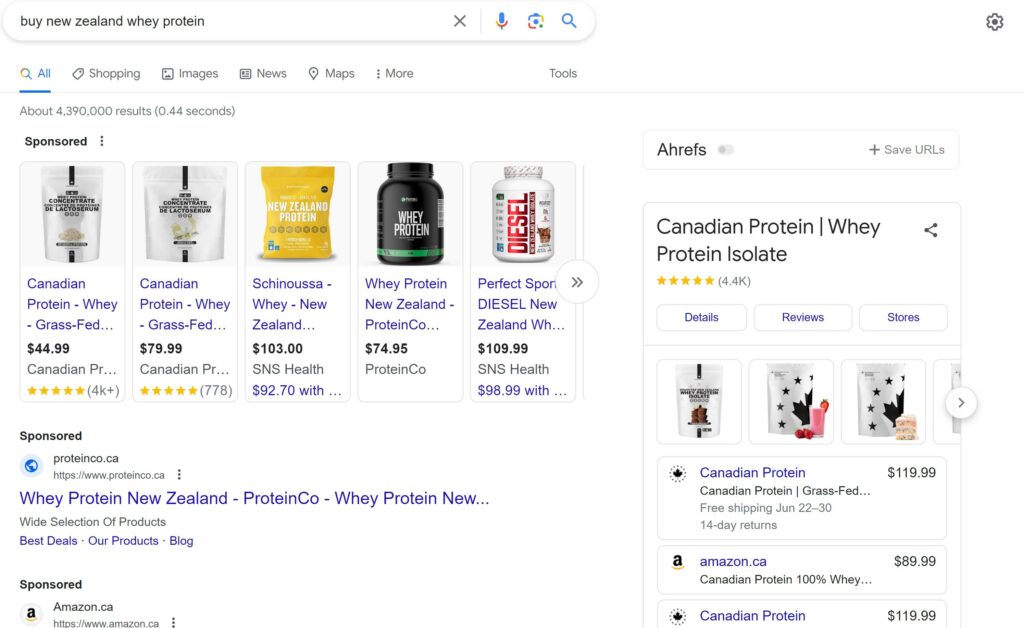
Consulting SERPs when optimizing content for transactional queries is crucial because it helps you understand what type of content.
Google or any other search engine considers valuable.
By analyzing the top-ranking pages on a particular query’s SERP, you can get an idea of what kind of content performs well in terms of user engagement and conversions.
Techniques Used to Evaluate SERP Reliability
There are several techniques that SEO experts use to evaluate the reliability of a specific SERP:
- Check Google Search Console: Use Google Search Console’s performance report feature to see which keywords drive traffic to your website. This will give you insights into which keywords have high transactional intent.
- Use SEMrush: SEMrush is an excellent tool that provides detailed data on keyword rankings, organic traffic, backlinks, and much more.
- Analyze top-ranking pages: Analyze the top-ranking pages on a particular query’s SERP and look at factors such as quality content, links, site speed, user experience (UX), etc.
- Look at domain authority: Check the domain authority of the top-ranking pages on a particular query’s SERP. If they are from high-authority websites, there’s a higher chance that the SERP is reliable.
Examples of How SERP Reliability Can Impact SEO Efforts
SERP reliability plays a significant role in SEO efforts, and here are some examples:
- Content creation: By analyzing SERPs for transactional search intent, you can create content that matches user intent and provides value to your target audience.
- Keyword research: Keyword research should be done by analyzing SERPs as it helps you understand which keywords have high transactional intent.
- Link building: Analyzing top-ranking pages on a particular query’s SERP gives insights into what type of content performs well. This information can help you build links to your website from high-quality sources.
Optimizing for Transactional Search Intent: Examples and Identification
Tips on How to Optimize Website Content for Transactional Search Intent
To optimize your website content for transactional search intent, you need to understand what users look for when performing a transactional search.
These users are typically looking for a specific product or service that they want to buy or sign up for.
Here are some tips on how you can optimize your website content:
- Conduct keyword research: Keyword research will help you identify the keywords people use when searching for products or services like yours. Use these keywords in your content to make it more relevant and visible in search results.
- Create high-quality product pages: Your product pages should be optimized with clear descriptions, images, pricing information, and reviews/testimonials from previous customers.
- Optimize meta descriptions: Your meta descriptions should include information about the benefits of your product or service and a call-to-action (CTA) that encourages users to click through to your site.
- Use CTAs throughout your site: Use CTAs encouraging users to take action, such as “Buy Now” or “Sign Up Today.”
- Make it easy for users to convert: Ensure that your checkout process is easy and straightforward so that users can efficiently complete their purchases.
Explanation of The Importance of Creating a Seamless User Experience
Creating a seamless user experience is essential when optimizing for transactional search intent.
Users who perform transactional searches have already decided what they want; therefore, they expect a seamless and straightforward experience when making a purchase or taking action.
Here are some best practices for creating a seamless user experience:
- Ensure that your website is mobile-friendly: In today’s world, many people use their mobile devices to browse the internet. Therefore, ensuring that your website is responsive and can adapt to different screen sizes is crucial to provide an optimal browsing experience for all users.
- Make it easy for users to find what they’re looking for: Use clear navigation menus, search bars, and filters to help them quickly find the products or services they need.
- Provide detailed product information: Include detailed product descriptions, images, pricing information, and reviews/testimonials from previous customers to help users make informed purchasing decisions.
- Use high-quality visuals: Use high-quality visuals such as images and videos to showcase your products or services in action.
Additional FAQs on Transactional Search Intent
How Does Optimizing for Transactional Search Intent Differ from Other Types of Search Intent?
Optimizing for transactional search intent involves creating content that encourages users to make a purchase or take another type of conversion-focused action.
This differs from informational or navigational searches, which may not have a direct sales goal in mind.
Can Any Business Benefit from Optimizing for Transactional Search Intent?
Yes! If you run an online business, including transactional keywords in your SEO plan is wise.
Focusing on users actively searching to buy can improve your chances of boosting sales and seeing a higher conversion rate.
How Do I Identify Transactional Search Intent Topics for My Business?
Start by brainstorming a list of keywords related to your products or services.
Then, use tools like Google Keyword Planner or SEMrush to identify high-volume transactional keywords that are relevant to your business.
What Are Some Examples of Effective Calls-To-Action for Transactional Content?
Examples of effective calls-to-action include “Shop Now,” “Buy Today,” “Get Your Free Trial,” and “Sign Up Today.”
Make sure your call-to-action is clear and concise and encourages users to take action.
How Can I Ensure My Website Appears at The Top of Ser Ps for Transactional Searches?
To improve your chances of ranking high on SERPs for transactional searches, make sure you’re using relevant keywords throughout your content, optimizing meta tags and descriptions, and providing valuable information that meets user needs.
Consider investing in paid search advertising to boost visibility further.
How Long Does It Typically Take to See Results from Optimizing for Transactional Search Intent?
The timeline for seeing results from optimizing for transactional search intent will vary depending on various factors, such as competition level and the quality of your content.
However, with consistent effort and a focus on meeting user needs, you should start to see improvements in traffic and conversions within a few months.
Can Social Media Be Used to Optimize Transactional Search Intent?
Yes! Social media platforms like Instagram and Facebook offer opportunities to showcase products or services through visually appealing posts encouraging users to purchase.
Social media advertising can be an effective way to target users who are actively searching for products or services similar to yours.
Conclusion: The Importance of Transactional Search Intent
In conclusion, understanding and optimizing for transactional search intent is crucial for businesses to drive conversions and sales.
By identifying the characteristics and topics associated with transactional searches, analyzing top-ranking pages and SERP results, and optimizing content accordingly — businesses can increase their chances of appearing in front of potential customers who are ready to make a purchase.
To ensure your website ranks high on SERPs for transactional search intent, it’s important to check the reliability of the results by consulting the SERPs.
This will help you understand what users are searching for and how you can tailor your content to meet their needs.
When optimizing for transactional search intent, focus on providing clear calls-to-action that encourage users to take action.
Use simple language that appeals directly to your target audience, highlighting the benefits they’ll receive by making a purchase.
Remember that Google values expertise, authoritativeness, and trustworthiness (E-A-T) when ranking websites.
Make sure your content demonstrates these qualities by providing accurate information that is backed up by reliable sources.
Incorporating transactional search intent into your SEO strategy can help drive more qualified traffic to your website and increase conversions.
By focusing on user needs and tailoring your content accordingly, you can position yourself as a trusted authority in your industry.
